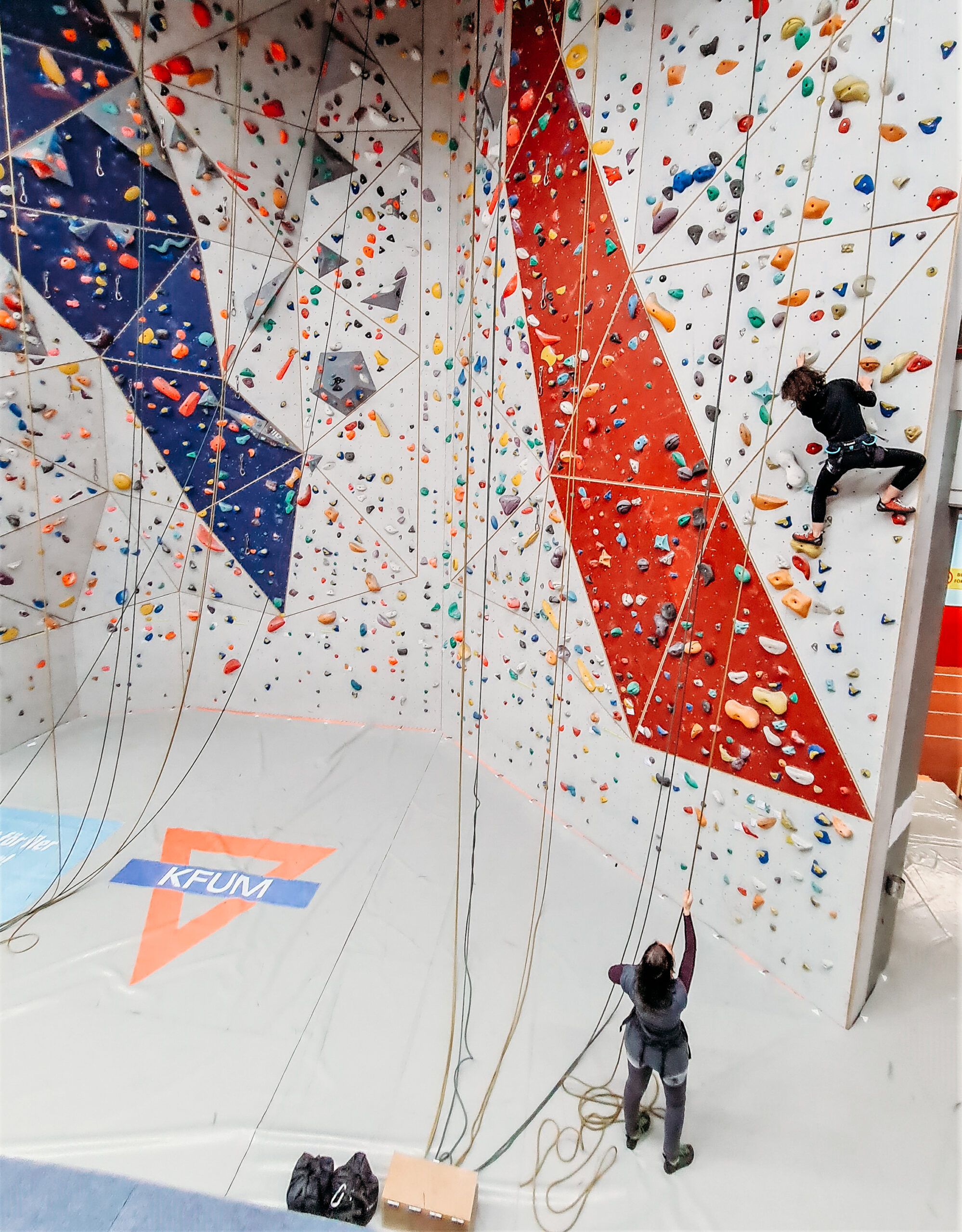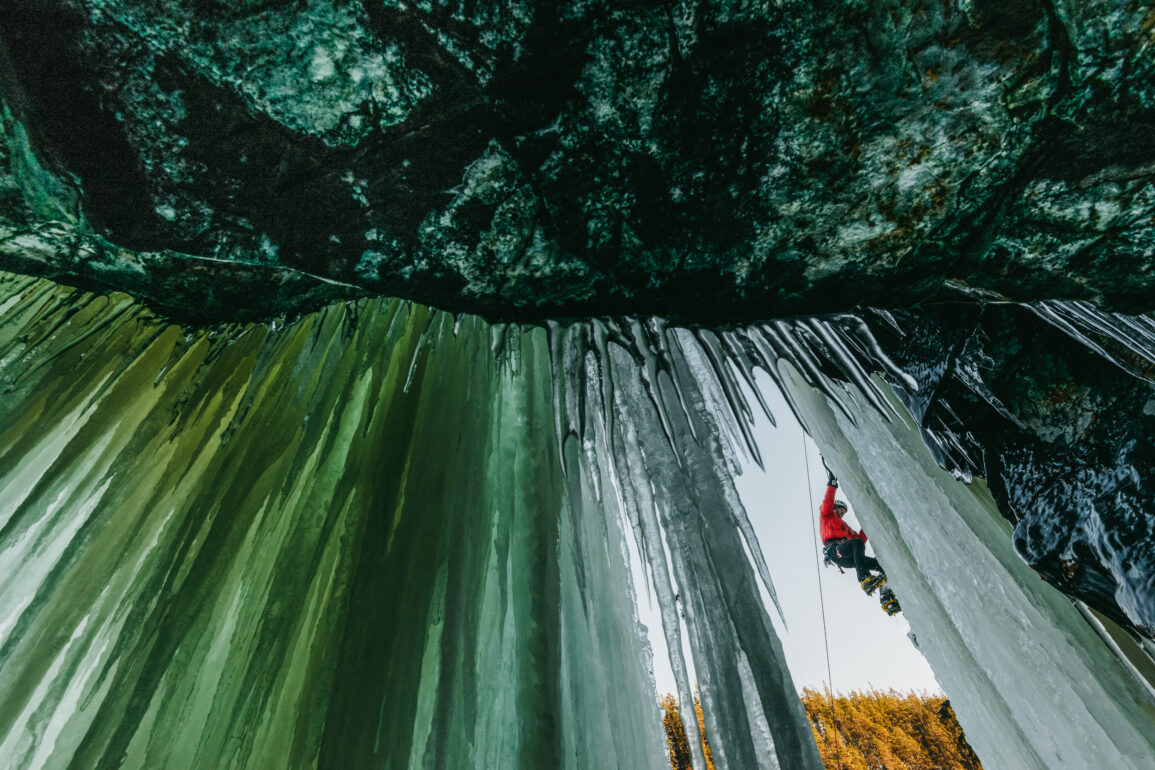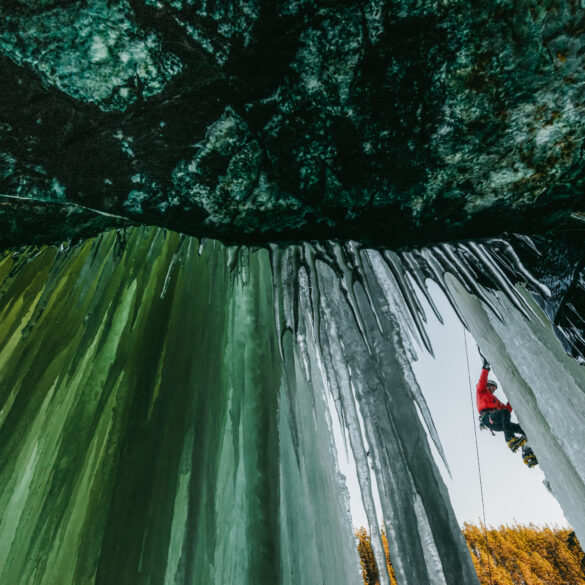Skellefteå may not seem like a climber’s paradise at first sight, but the lively climbing community is thriving. Rehana Lothian talks to some local climbers about their favourite climbing spots.

Flying into Skellefteå and peering down at the landscape, a keen climber might feel a little lost in this relatively flat patchwork of forests, lakes and rivers. This is certainly no Yosemite, but the opportunities are there if you look. Climbers are natural travelers and there is a growing band of international climbers who have moved to Skellefteå to work. They are joining local climbers and together they’re constantly developing routes and areas that can still challenge and interest a seasoned climber. I asked a few of Skellefteå’s climbers about their experiences in the area.
‘No mosquitos!’
Paulina moved to Skellefteå from Stockholm and started climbing around 2010. Since moving here and starting to explore Norrland’s opportunities, Paulina’s had two children and has had to adapt her approach but still enjoys climbing life in Skellefteå. She concedes that the climbing scene here isn’t as big as those in Umeå and Luleå, which are university towns, but as more international people arrive, climber numbers are growing. One thing she would love to see is female climbers coming back to the sport after having kids, despite the inevitable balancing act. Paulina has a few tips for new arrivals to Skellefteå: “The important thing here is timing. Don’t miss the seasons. When the snow begins to melt and the days are warm enough, you can start to go out on some routes. There are some really perfect moments in spring and, of course, there are no mosquitos! After summer there are still some warm days in the autumn which are good too. Access can be a problem – roads and tracks that haven’t been cleared all winter or are extremely wet during the melt, mean that local experience and knowledge can be very handy.”
‘Speak to new people’
Bouldering opportunities (climbing on crags or boulders without ropes; the emphasis is on difficulty rather than height) offer the biggest challenges for thoe who prefer to climb outside. Burträsk, where an annual meet-up happens, is one of the go-to areas. If you’re after picturesque, try bouldering around Byske or on some of Skellefteå’s islands. Finding climbing partners may require some effort initially but Paulina suggests the old-fashioned approach. “Show up at the wall at different times and speak to new people. Lots of the climbers have moved here from abroad, so they will have had to have done the same thing”. Although underdeveloped in the Skellefteå area, ice and mixed climbing, (rock and ice combined) opportunities are also on offer. This winter, Erik and Paul have been out investigating spots.
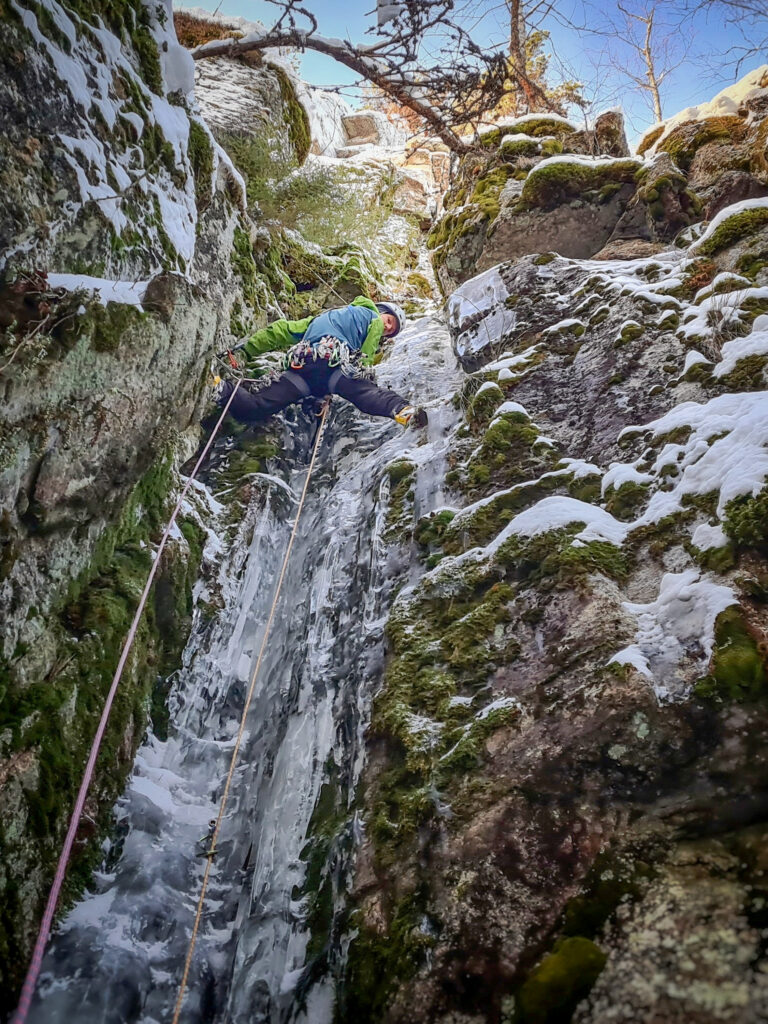
In February, Erik, (from Stockholm) and his friend Paul (from Ireland), took off to an ice and rock face Eric had been eying up for a long time near Renström in the west. They put up a new mixed climb and Erik decided to call his route Irlandiska vänskap (Irish friendship). There is further local potential, “It’s given me a taste to explore and search out more new ice areas” says Paul. Slightly further afield, northwest of Skellefteå, all the way up to the northern Norwegian Fjälls, there are many developed ice climbing areas, outlined in Rick McGregor’s guide, Ice Climbing in Lapland (http://kiwiclimber.se/iceclimbing/iceguide/iceguide.pdf). The climbing community is fairly well connected along the north coast and competitions that run in Skellefteå are visited by climbers from Luleå and Umeå and vice versa.
‘Lots of good crags’
There are many good crags within driving distance of Skellefteå; the guide book, Norra Kustlandet, lists all the developed crags between Haparanda and Harnosand. This includes sports climbs (protection gear is in place) and traditional routes (protection is placed and retrieved by the climber). You can also take a look at www.27crags.com.
Up the E4, Luleå even has a 9a sports climb, (in climbing lingo that grade means ‘almost impossible’), so far only climbed by Hannes Puman, Sweden’s top climber.
Originally from Poland, Sandra moved to Skellefteå two years ago. She caught the climbing bug while studying and has sought out climbing walls and outdoor climbs ever since. Sandra tries to climb once a week and really enjoys the local climbing wall. “We have some talented route setters and problems are changed often, so I really enjoy it there.”
One of her standout climbing memories is the trip she took to the beautiful Lofoten Islands in Norway, last summer. “During the summer, the sun practically does not set;
finally, we found a place for
multi-pitch climbing where there is no fear we won’t finish before dark, and the views were amazing!”
Climbing for families and children in town is accessible, as Skellefteå has a good climbing association (KFUM), to help you begin. KFUM uses Skellefteå Kraft Arena, which has a rope wall and a bouldering room. The association runs courses for children from the age of ten, (a parent is required to accompany under 12s); for more advanced teenagers, several sessions run in the week.
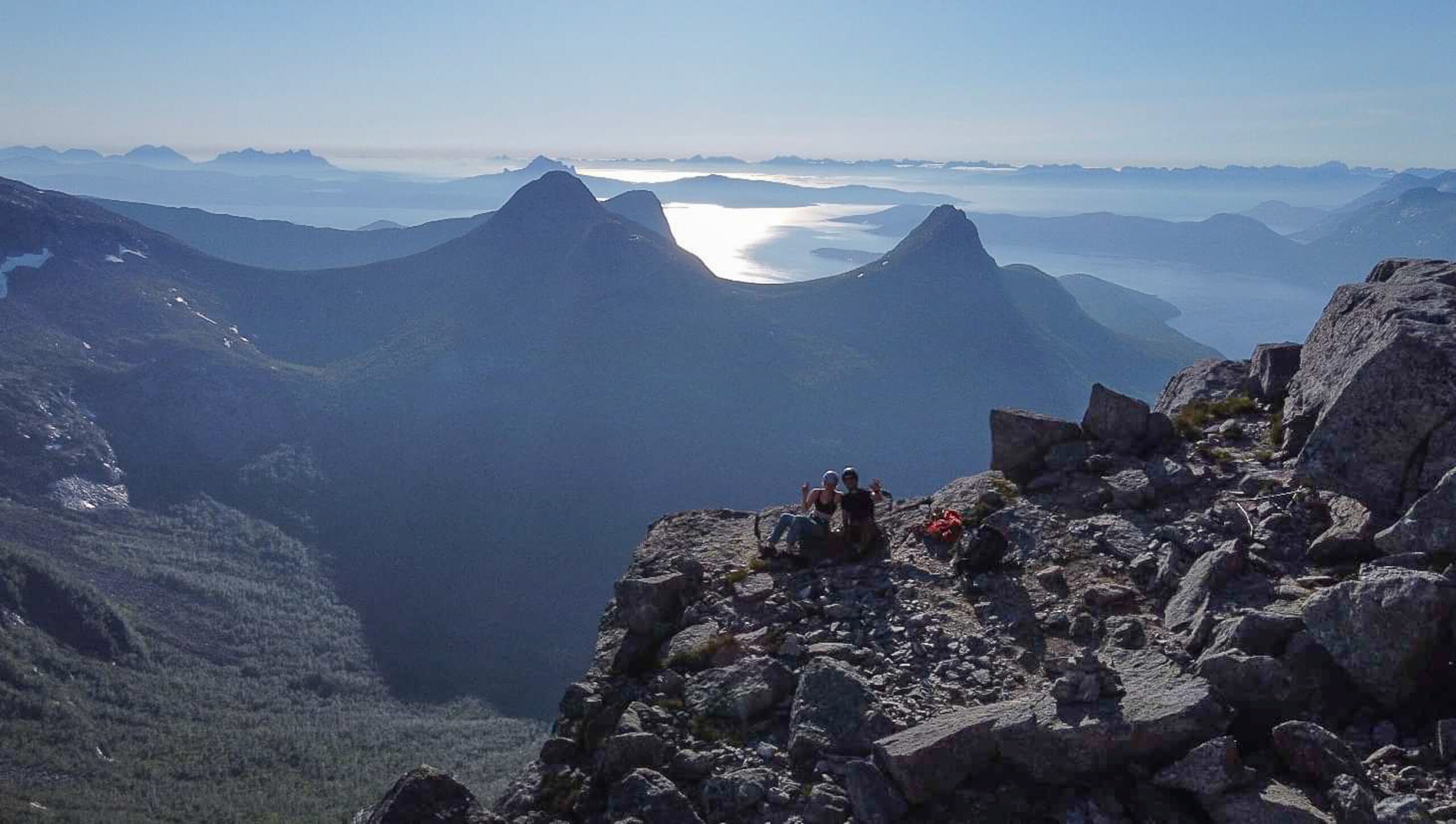
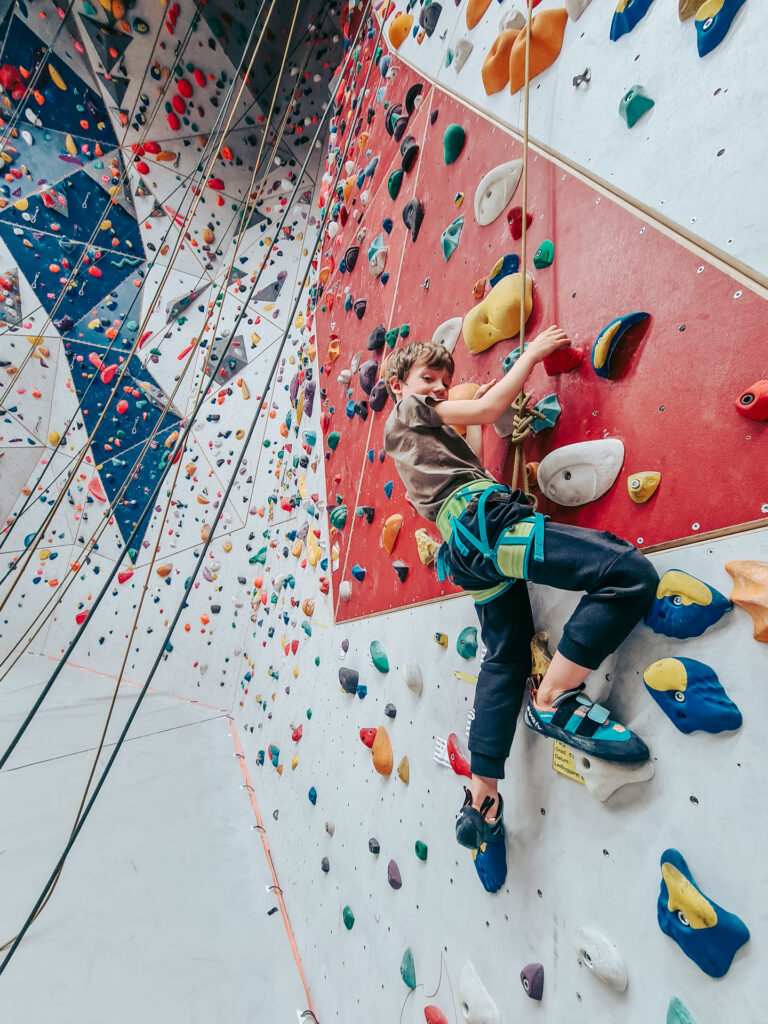
‘Quality family time’
Paulina thinks it’s a great way to spend time together. ”If you join one of the courses, a parent has to be with the child of course, so it’s a nice focused time to spend together. Importantly, KFUM provides the gear, which can be expensive when you don’t know what quality to buy or for how long you will use it.” Dan Bramsäter, who works on behalf of the association, explained some of the courses. “Adult beginners can take a top rope course which encompasses safety, rope handling, equipment and how to fall etc. This course will give you your green card, which can be used at most walls around Sweden and shows you have completed the training”.
‘More leaders needed’
“Outdoors, there is also a teenage camp in summer, where the teenage group stay overnight in tents near the bouldering site and generally do a range of activities. You can wake up close to your site and get stuck in and of course it’s a team building and social occasion. And for the wider group, every year there is a meet up at Burträsk, where climbers of mixed abilities can come together and try things out, socialise and exchange all those handy tips that lead you to new areas”. Dan, who works on behalf of the association, explains how the group has grown in the past few years. “Membership has grown steadily in the past few years from 125 in 2016 to over 300 in 2020; there is a lot of interest. In fact, the children’s group is so popular we have a queue. We are always looking for more leaders.” There ’s a lot happening this year at the climbing wall, according to Peter Nilsson, KFUM chairman. “New climbing areas are being built; the bouldering room will be tripled in size and another rope wall will be built. The building work starts this summer and should be completed in August 2023.” Climbers arriving in the area, take heart, there is plenty to get your teeth into and with the expansion of the KFUM wall, year-round interest is guaranteed.
